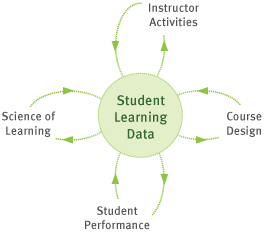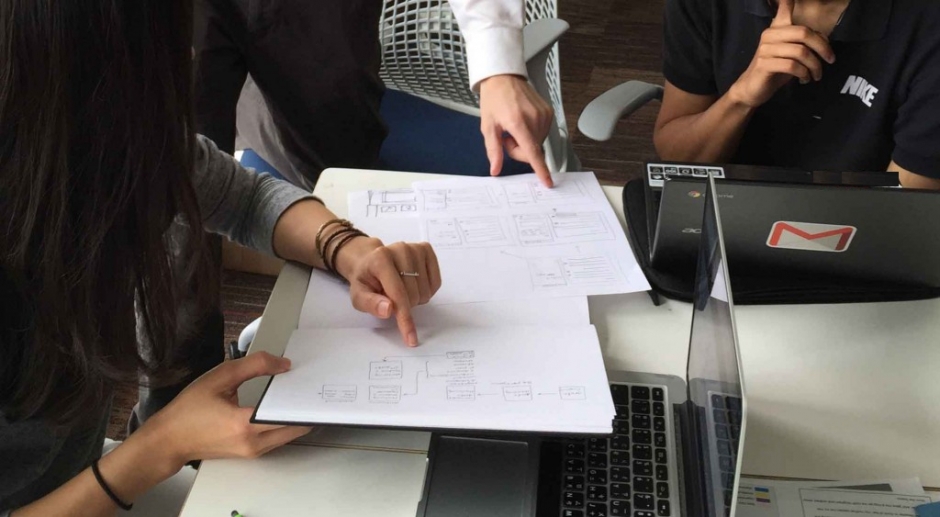OLI — Profiles of Next Generation Learning
Here’s a glimpse of what OLI is doing to help the higher education system respond to some of the big challenges of the last decade, from limited resources to compressed teacher/student interaction times.
Our key goals
Our key goals
Who benefits from using OLI?
Educators
Focus your efforts.- Course materials and delivery platform are based on leading-edge research
- Educators get timely, targeted feedback about their students’ progress; and automatic grading.
- Learning Dashboard gives real-time insights into mastery of learning objectives
Academic Institutions
Watch learning trends.- OLI can benefit all types and sizes of institutions
- Using student data, OLI can improve student outcomes and completion rates
- Work with OLI to build relationships with leading-edge research groups and organizations
Types of OLI courses
OLI courses are deployed in three ways: Academic, Independent Paid, and Open & Free versions.
Compare OLI course types
| Academic | Independent Learner | Open & Free | |
|---|---|---|---|
| Use case | Instructor-led class | Independent learner | Independent learner |
| Grades/Credit | Grade determined by instructor / credit granted by school, not by OLI | No grade / no college credit | No grade / no college credit |
| Instructor role | Instructor sets up and administers the course for class | No instructor | No instructor |
| Free instructor tools |
|
None | None |
| Course Materials | All included | All except human-scored questions | All except tests |
| Support | Email, knowledge base, FAQ | Email, knowledge base, FAQ | Knowledge base, FAQ |
| Cost per student | $25** | $10 | Free |
| | | |
**Maintenance fee varies, but most cost $25 per student. They range from $15 to $80.
OLI courses are deployed in three ways: Academic, Independent Paid, and Open & Free versions.
Compare course types
| Academic | Independent Learner | Open & Free | |
|---|---|---|---|
| Use case | Instructor-led class | Independent learner | Independent learner |
| Grades/Credit | Grade determined by instructor / credit granted by school, not by OLI | No grade / no college credit | No grade / no college credit |
| Instructor role | Instructor sets up and administers for class | No instructor | No instructor |
| Free instructor tools | Editing LMS Integration Learning Dashboard Gradebook Course Settings, Roster Control Content sequencing and combining |
None | None |
| Course Materials | All included | All except human-scored questions | All except tests |
| Support | Email, knowledge base, FAQ | Email, knowledge base, FAQ | Knowledge base, FAQ |
| Cost per student | $25** | $10 | Free |
| | | |
**Maintenance fee varies, but most cost $25 per student. They range from $15 to $80.
Academic
When a teacher assigns OLI materials to her students as a textbook replacement or supplemental material, this is an Academic use case. An instructor is leading a roster of students, the student learning data and progression are being saved and displayed for the instructor in the Learning Dashboard, and assessment scores are available in the gradebook. Using OLI courses for Academic purposes come with a modest maintenance fee to help maintain the content and technology, and to continue to offer OLI’s materials and services in the future.
Independent Paid*
Independent Paid OLI courses, as the name suggests, are for independent learners who want to learn from OLI materials on their own time. These courses feature a nearly full complement of learning materials, including system-scored tests. The only missing content are the questions that require human review for scoring. These courses are entirely self-guided and self-paced, with no instructors, no start or end dates, no college credit, and no certification of completion. They are for independent learners who see the value of a full OLI Academic course, but are not part of a class whose teacher is using OLI courses in their class.
Open & Free*
Open & Free courses are one way OLI is working to democratize education. Through generous grant funding in the past, and our current maintenance fee system, we can make top-quality educational materials available to anyone in the world with an internet connection. Like Independent Paid courses, Open & Free courses have no instructors, no start or end dates, no college credit and no certification of completion; but Open & Free courses also include no tests and self-service support.
*Independent Paid courses and Open & Free courses are not intended for Academic use, because the student data and scores will not be seen by an instructor.
Data-driven design

Student learning data provides feedback to help learning scientists, instructors, course designers, and ultimately the students themselves.
The most powerful feature of web-based instruction is that it allows us to embed assessment into every instructional activity. With the students’ permission, we collect real-time data of student-use in those activities.
This data makes possible the corrections, suggestions, and cues that are tailored to the individual student’s current performance and gives educators an unprecedented opportunity to stay in tune with many aspects of their students’ learning. The data also benefits our course designers and learning science researchers in the following ways.

Course Designers
Student activity data informs course designers about how students use the course material and how they perform on learning activities. Course designers use this data to iteratively refine our courses. For example, if many students are not performing well on assessments of a particular concept, course designers will review the explanation of that concept, the practice activities, and the self-assessments to see where they might make an improvement.

Learning Science Researchers
Some OLI courses also serve as part of the research environment for the Pittsburgh Science of Learning Center (PSLC). Learning researchers affiliated with the PSLC can embed experimental manipulations in OLI courses to test specific learning theories.
How was the Open Learning Initiative started?

“Improvement in post secondary education will require converting teaching from a solo sport to a community based research activity.”
OLI’s proven results
An evidence-based design is manifested in OLI’s content, instructional design, tools, and delivery platform.
Independent and internal studies have shown our approach to be highly effective, evaluating courses using actual student performance in real classrooms.


